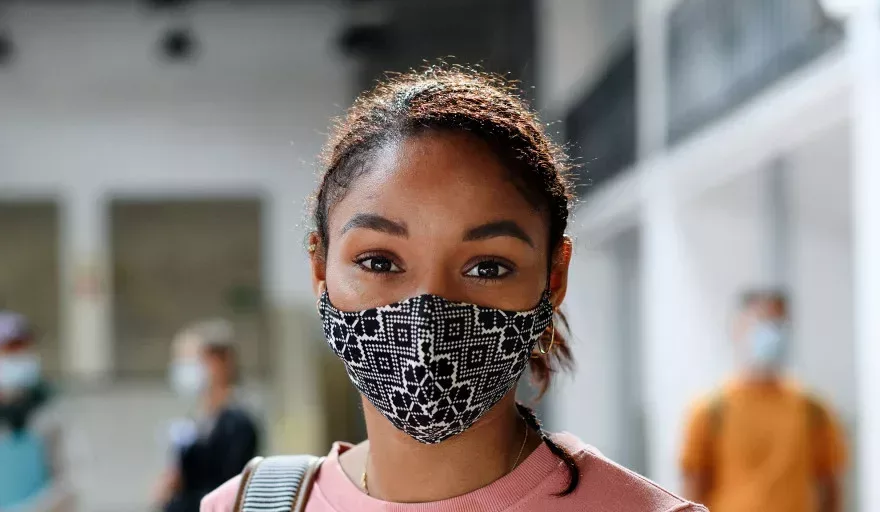As a passionate advocate for dismantling systemic racism in the US education system, educational consultant Sydney Montgomery discusses disrupting the professional landscape
COMBATTING THE HIGHER EDUCATION GAP
As much as we want to say we are doing things to address the higher education gap in this country, the reality remains that we continue to look at this issue through such a narrow lens that the solutions we continually deploy fail to make meaningful change.
A 2020 Education Trust report showed that since 2000, Black enrollment at the 101 most selective colleges and universities decreased by 60 percent. The report further shows only nine percent of the 101 selective colleges enroll representative numbers of Black students and only 14 percent of those same colleges enroll representative numbers of Latinx students. Most disturbingly, in states that had the largest Black populations, those colleges had the least accessible colleges and universities.
EQUITABLE EDUCATION BEGINS BEFORE HIGH SCHOOL
Equitable access to higher education is integral to the discussion of upward mobility and wealth and income disparities in this country. Education is one of the centerpieces and gears perpetuating structural racism. However, in order to have equitable access to higher education, students need to have equitable preparation in their elementary and secondary schools in order to level the playing field. Without rebalancing at the elementary and secondary schools, some students will end up being placed into an elite education pipeline at the age of five.
One of the greatest disparities in elementary and secondary schooling is private school enrolment. Black students account for 9.3 percent of all private school students. By comparison, White students account for 67 percent of all private school students. Of private schools that enrolled at least 750 students, Black students make up only six percent of the private school population. In fact, the rise of private schools in this country can be directly correlated to White parents pulling their students out of public school in response to desegregation efforts in the early 20th century. As it stands, private schools still account for 15 percent of racial segregation and they are also increasingly segregated by income.
We need to examine the racial makeup of elite private schools and raise the educational standards (and pay teachers accordingly) at public schools. Otherwise, we will continue to operate in a paradigm in which some public schools students will receive a rudimentary education while some private school students will receive a collegiate education in the fifth grade. As it currently stands, data shows that high schools with 90 percent or more students of color spend an average of $733 less per student per year than schools with more white students. The results of this disparate spending show when you look at the national achievement metrics in reading, math, and writing.
It is also important to note that systemic racism in education is not only limited to lower-income Black students. Systemic racism does not stop affecting Black individuals just because they become the CEO of a company, even if that company makes the Forbes 500 list. Data continually shows that even wealthy Black students have to overcome implicit bias from teachers and counselors in their recommendation letters and college lists. We should be aware of and have an understanding of work such as that in We Want Black Students, Just Not You: How White Admissions Counselors Screen Black Prospective Students, from Ted Thornhill, an assistant professor of sociology at Florida Gulf Coast University, which shows how racism operates on the college/university admissions level. There is also research on Gender and Ethnic Bias in Letters of Recommendation that directly affects the college applications of the students we serve. College Equity First, a non-profit organization that was co-founded by myself and two other educational consultants evaluates the campus climate for Black students at 103 of the nation’s more popular and elite private institutions through the College Equity Index. Overwhelmingly, the data is clear that even if students are able to matriculate to these schools, colleges and universities need to do more to make the environments conducive to their success.
“We need to examine the racial makeup of elite private schools and raise the educational standards at public schools”
Sydney Montgomery, CEO S. Montgomery Admissions Consulting
SHIFTING EDUCATION POLICY
We cannot continue to only blame funding and teachers for the national education gap. We must also look toward creative and retributive education policy that acknowledges the effects of systemic racism in America and the long-lasting effects of systemic obstacles to educational opportunities for success.
The desire to become part of the solution to change the higher education landscape in this country led me to pivot from practicing law to becoming an educational consultant full-time. As the first lawyer in my family, the daughter of military and immigrant parents, and a graduate from Princeton and Harvard Law School, I could see the immediate and tangible benefits of access to elite institutions on my own career path. As the first student from my high school to go to Princeton, however, I could also see the numerous structural blockades in the way of first-generation and minority applicant success.
Unfortunately, there are so few diverse attorneys in this country that having leaders to advocate for the legislative and policy needs of minority students has been an uphill battle. Despite making up 13 percent of the general population, only five percent of lawyers in this country are Black, whilst only two percent of lawyers are Black women. Looking at the national landscape, Black and Latinx lawyers disproportionally enroll in lower-ranked law schools and have 97 percent more debt than their white counterparts when graduating from law school.
The same structural inequities that prevent students from being as prepared as their elite white counterparts for selective colleges and universities continue to be a roadblock for future success in the law school admissions process. In 2017, 49 percent of Black applicants did not get into a single law school that they applied to.
QUALITY AND PERSONALIZED GUIDANCE
I started my company, S. Montgomery Admissions Consulting, to help change this landscape. We have worked with almost 200 college and law school applicants. 91 percent of our students identify as first-generation or minority applicants and 95 percent of our high school students have received admission to one of their top three colleges. 78 percent of my law school students matriculate to a Top 30 law school and over 56 percent of my students receive at least a half-tuition scholarship to law school.
My company offers private consulting packages, small group boot camps, and asynchronous courses and workshops. In addition to paid services, we run a free Barrier Breakers® Facebook group where I host the weekly Break Into Law School™ live stream and podcast. As one of the only prominent law school consultants of color in the industry, we have started partnering with Historically Black Colleges and Universities as well as Minority Serving Institutions to increase representation and success rates for minoritized applicants. We are also launching software that will continue to increase access to quality essay writing and coaching to underserved populations.
Too often, educational consulting is seen as part of the problem instead of part of the solution in combatting systemic racism in education. According to the 2018 Independent Educational Consultants Association State of the Profession, there are over 2,700 consultants across various professional organizations. Despite this growth, educational consultants represented in these organizations continue to be overwhelmingly White. If we want to be intentional about combatting the higher education gap, we need to push for more educational consultants from diverse backgrounds and for more relationship and pipeline programs between these diverse consultants and the elite institutions that purport to care about diversity metrics. We would also benefit from licensure and recognition of the profession to combat bad actors from using educational consulting to unfairly and unscrupulously benefit the elite wealthy.
Research by Christine Mulhern at Harvard University, cited in this 2019 article states that there is a 3.8 percent increase in the likelihood of a low-income minority student graduating from high school when paired with a counselor of the same race. In the Journal of Ethnic & Cultural Diversity in Social Work (2011), Robert Mindrup, Alicia Lambergheni-West, and Beverly Spray note in their article, White Privilege and Multicultural Counseling Competence: The Influence of Field of Study, Sex, and Racial/Ethnic Exposure[1] that many counselors work and interact with minority students in their daily activities, yet many White school counselors have limited knowledge of how whiteness and White identity development may influence their interactions with these students.[2]
Beyond just working with students, educational consultants can make it apparent that diversity is a priority to our students. We can mention this during webinars or tours; we can write to our alma maters. We should be inquiring how many admissions recruiters/enrollment managers are Black. We don’t have to accept the tagline when colleges continue to say diversity is important to them while doing very little to actually increase their numbers and foster a welcoming and safe racial environment.
FOOTNOTES
[1] Mindrup, R. M., Spray, B. J., & Lamberghini-West, A. (2011). White privilege and multicultural counseling competence: The influence of field of study, sex and racial/ ethnic exposure. Journal of Ethnic & Cultural Diversity in Social Work, 20, 20-38. doi:10.1080/15313204.2011.545942
[2] Moss, Lauren, Singh, Anniliese, White School Counselors Becoming Racial Justice Allies to Students of Color: A Call to the Field of Counseling; See also, Helms, J. B. (1990). Black and White racial identity: Theory, research, and practice. New York, NY: Greenwood. doi:10.2307/2073777;

































